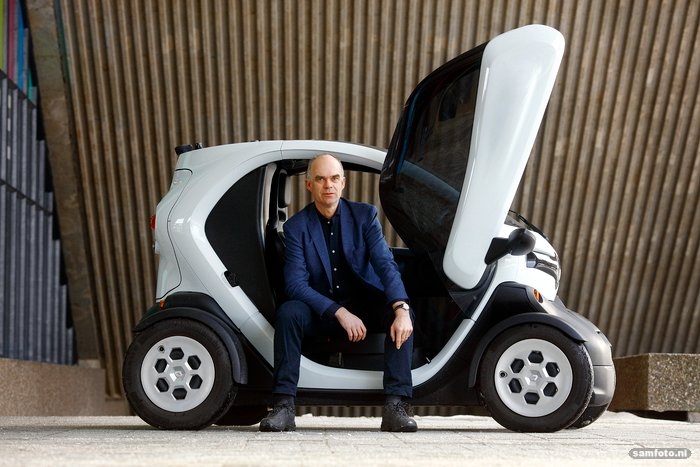Resilient transport: shareable, small-scale and lightweight
How can transport networks become more resilient? Professor of Transport Modelling Bart van Arem (CEG) envisages plenty of opportunities.
The backdrop for his Dies Natalius lecture was a Renault Twizy. This is a one-person car programmed by Delft researchers to collect you automatically from the station. “It looks great on the video, but in practice it’s really difficult getting the car to drive in public spaces. But we can now control it remotely”, explains Van Arem.
It is one of the first steps towards a more resilient transport network. Van Arem identifies three areas of resilience: a person’s capacity to adapt their travel patterns, logistical adaptations, such as building up supplies, and alternative transport networks. “For example, the A13 motorway is an alternative for the A4.”
Van Arem argues that transport networks are already resilient. “Even during the pandemic, we were capable of adapting our travel patterns and much more is possible online than we thought.” That resilience can be used to make transport more sustainable, safer and more inclusive. Developments such as automated and electric driving can contribute to that. Van Arem: “I do wonder how sustainable a 2,000kg electric car really is.”
We are moving towards a situation in which transport will be seen as a service, not as a possession. Besides, a shared car uses fewer resources and takes up less parking space
In other words, electric cars need to be lighter and preferably shareable. Van Arem: “We are moving towards a situation in which transport will be seen as a service, not as a possession. Besides, a shared car uses fewer resources and takes up less parking space.” Van Arem also believes people should start cycling more and Europe needs to invest heavily in high-speed trains, providing an effective alternative for cheap flights.
He also feels that resources need to be shared more fairly. Van Arem cites the example of the Delft start-up Scoozy, which is making mobility scooters safer and more modern through automation. Van Arem: “All groups in society need access to good technology.”
Even in twenty years’ time, Van Arem does not expect to see completely self-driving cars. “However, demand-driven autonomous shuttles will be used more in public transport. And delivery robots will be riding around in cities.”
